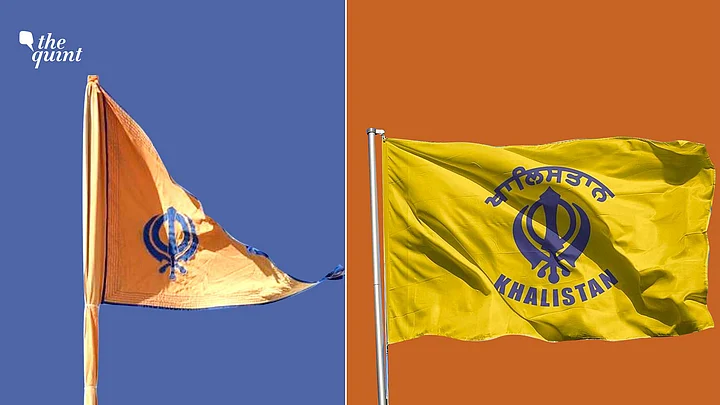When protesters hoisted the Nishan Sahib at Delhi's Red Fort, it sparked a debate on whether or not the act was driven by pro-Khalistan politics.
The Nishan Sahib is revered by Sikhs and is a symbol of the Khalsa Panth.
In this context, it is important to understand that Khalsa and Khalistan are two different concepts with very different history and political connotations.
According to Encyclopedia Brittanica, Khalsa means, "The purified and reconstituted Sikh community instituted by Guru Gobind Singh on March 30, 1699 (Baisakhi Day; Khalsa Sikhs celebrate the birth of the order on April 13 of each year). His declaration had three dimensions: It redefined the concept of authority within the Sikh community, it introduced a new initiation ceremony and code of conduct, and it provided the community with a new religious and political vision. Khalsa is used to denote both the body of initiated Sikhs and the community of all Sikhs."
Therefore, Khalsa as a concept is much older, broader and more importantly, deeply central for the Sikh community.
History of The Term Khalistan
According to scholar of comparative religion Giorgio Shani, the term Khalistan was coined in March 1940 by Dr Vir Singh Bhatti in a pamphlet titled 'Khalistan' which made the case for a separate Sikh homeland in response to the Muslim League's Lahore Resolution. Politically, Bhatti's appeal was to Sikhs who were not represented by either the Indian National Congress or the Akali Dal.
The term ‘Khalistan’ came to be tied closely with the insurgency of the 1980s, though scholars say that its connotations changed with time.
Author Amandeep Sandhu told The Quint in an earlier interview, that Khalistan and the idea of a Sikh homeland, has meant different things at different points of time and not all of them can be labelled as ‘separatist’.
For instance, as Sandhu points out, for sections of younger Punjabis in the diaspora, "The idea of Khalistan actually means an inquiry into the human rights violations, during the militancy phase."
From a legal point of view, a 1995 verdict by the Supreme Court is important in this context. This was in a case involving two government employees who chanted Khalistan Zindabad and Raj Karega Khalsa.
The SC held that chanting these slogans in itself do not constitute sedition. In fact the apex court said that the police displayed lack of ‘maturity and sensitivity’ in arresting the two people and held that such arrests can end up causing ‘more trouble’.
(At The Quint, we question everything. Play an active role in shaping our journalism by becoming a member today.)
